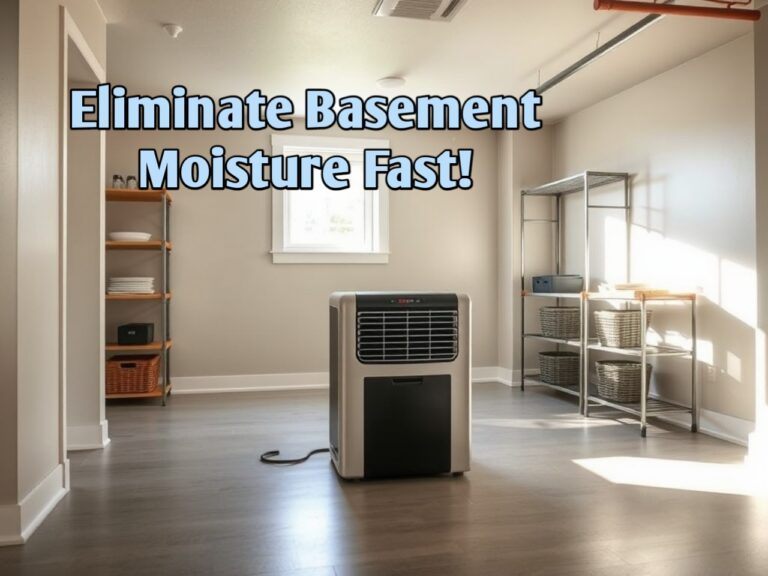Dusty Air in Your Home? Here’s How to Improve Indoor Air Quality
Dusty air is more than just an annoyance; it’s a silent contributor to various health issues and can significantly impact your indoor living environment. Whether it’s due to external factors like pollution, seasonal changes, or internal ones like inadequate ventilation and poor cleaning habits, dusty air accumulates quickly and creates an uncomfortable and potentially harmful atmosphere at home. This article will guide you through the causes, effects, and solutions to manage dusty air and improve indoor air quality. Let’s dive into understanding what causes dusty air and how you can take actionable steps to keep your home’s air clean and fresh.
What Causes Dusty Air in Your Home?
Dust in your home comes from a variety of sources, many of which are unavoidable in everyday life. Dust is composed of tiny particles, including dead skin cells, fabric fibers, pollen, pet dander, dirt, and even microscopic pollutants like mold spores or chemicals from household products. But what are the main contributors to dusty air inside your home?
- Outdoor Air Pollutants: Dust and pollen from outside can easily enter your home through windows, doors, and ventilation systems, especially if you live in a high-traffic urban area or near construction sites.
- Inadequate Ventilation: Poor ventilation systems trap dust and allergens indoors, allowing them to recirculate and accumulate over time.
- Dirty HVAC Systems: Your heating, ventilation, and air conditioning (HVAC) system may become clogged with dust, dirt, and other pollutants, which are then dispersed into your indoor air when the system operates.
- Old Carpets and Furniture: Carpets, rugs, and upholstered furniture act like magnets for dust and dirt, particularly if they haven’t been cleaned thoroughly or regularly.
- Pet Dander: If you have pets, their shedding can significantly increase the amount of dust in the air, as pet hair and skin particles are major components of household dust.
- Household Activities: Routine activities such as cooking, cleaning, or even walking around can stir up dust that settles on surfaces or gets trapped in carpets and fabrics.
Understanding these causes is the first step to mitigating dusty air and taking proactive measures to improve indoor air quality.
The Health Risks Associated with Dusty Air
The dust circulating in your indoor air isn’t just unsightly—it can also pose serious health risks. The most vulnerable groups include children, the elderly, and individuals with pre-existing respiratory issues such as asthma or allergies. However, anyone exposed to dusty air over a prolonged period can suffer from its negative effects.
Respiratory Issues
The fine particles in dust can be inhaled, irritating the respiratory system. Prolonged exposure can worsen conditions like asthma, bronchitis, or chronic obstructive pulmonary disease (COPD). Even people without pre-existing conditions can develop respiratory problems, such as coughing, sneezing, or shortness of breath, from dust exposure.
Allergic Reactions
Dust often contains allergens like pollen, mold spores, or dust mites, which can trigger allergic reactions. Common symptoms include watery eyes, sneezing, a runny nose, and even skin rashes. People who are particularly sensitive to dust may find their symptoms worsen during the changing seasons when dust and pollen are more prevalent.
Skin and Eye Irritations
Dust particles can also irritate the skin and eyes. Contact with dust may cause itchiness, redness, and discomfort, especially if you have sensitive skin or wear contact lenses.
Sleep Disruptions
Dusty air in the bedroom can disturb your sleep quality. Dust mites, which thrive in bedding and mattresses, can lead to allergies or asthma symptoms, making it harder to breathe comfortably while sleeping. Poor air quality in your bedroom may result in restless nights, snoring, or waking up with a sore throat.
Long-Term Health Effects
While occasional exposure to dusty air might not seem like a significant issue, long-term exposure can have more serious consequences. Over time, continuous inhalation of fine dust particles can lead to chronic respiratory diseases or cardiovascular problems due to the strain it puts on the lungs and heart.
Signs Your Home Has Poor Indoor Air Quality
It can be challenging to immediately recognize the signs of dusty air and poor indoor air quality. However, several indicators should prompt you to take action to improve the air in your home.
Persistent Dust Buildup
If you find yourself constantly dusting surfaces, only for the dust to reappear quickly, this is a clear sign that your indoor air quality needs attention. Frequent dust buildup is often a result of poor filtration or ventilation systems that are not efficiently removing dust from the air.
Increased Allergy Symptoms
If you or your family members experience an uptick in allergy-like symptoms, such as sneezing, runny noses, or itchy eyes, especially while indoors, this can point to dust and allergens circulating in your home’s air.
Odors and Stale Air
Does the air in your home feel musty or stale, despite regular cleaning? Dust and poor air circulation often lead to unpleasant odors that don’t easily dissipate. This can be especially noticeable after turning on your HVAC system if the filters are dirty or clogged with dust.
Dirty Air Vents and Filters
Inspect your air vents and HVAC filters. If you notice visible dust or debris collecting around these areas, it’s a sign that dust is being circulated through your ventilation system rather than being trapped and filtered out.
Excessive Pet Hair
If you have pets, finding pet hair on furniture and carpets is normal, but if it feels like hair and dander are constantly floating in the air, it’s likely due to poor filtration or excessive dust accumulation.
Effective Ways to Improve Indoor Air Quality
Now that we understand the causes and effects of dusty air, let’s explore some practical and effective ways to reduce it and improve your indoor air quality.
1. Upgrade Your HVAC Filters
One of the most effective ways to combat dusty air is by upgrading your HVAC filters. Most standard filters are not efficient at capturing fine dust particles and allergens. Opt for high-efficiency particulate air (HEPA) filters, which are designed to trap even the smallest airborne particles, including dust, pollen, and pet dander.
2. Invest in an Air Purifier
Air purifiers are a great addition to your home, particularly if you live in an area prone to dust, pollution, or have pets. These devices work by circulating air through filters that trap airborne particles, improving the overall air quality in your home. Look for purifiers with HEPA filters for maximum effectiveness.
3. Regular Cleaning Habits
Regular cleaning is crucial in reducing dust accumulation. Here are a few cleaning tips to keep dust under control:
- Vacuum regularly using a vacuum with a HEPA filter to remove dust from carpets and upholstery.
- Dust surfaces frequently, but use a damp cloth or microfiber cloth to trap dust rather than simply spreading it around.
- Wash bedding and curtains regularly, as these items attract dust mites and allergens.
By maintaining a consistent cleaning routine, you’ll significantly reduce the amount of dust in your home.
4. Maintain Your HVAC System
Keeping your HVAC system in good working order is essential for controlling dust and improving air quality. Have your system serviced regularly, including cleaning the ducts, checking the filters, and ensuring the system is functioning properly. Dirty ducts can circulate dust throughout your home, even after cleaning.
5. Proper Ventilation
Improving your home’s ventilation can greatly reduce dust and improve air quality. Ensure that your kitchen and bathroom exhaust fans are working properly and consider adding air vents or fans in rooms that feel stuffy. Opening windows can also help, but be mindful of outdoor dust or allergens during certain seasons.
6. Control Humidity Levels
Dust mites thrive in humid environments, so it’s important to maintain an optimal humidity level in your home. Using a dehumidifier can help keep humidity levels between 30-50%, reducing dust mites and mold growth.
7. Reduce Indoor Pollutants
Certain household products, such as cleaning chemicals, paints, and aerosols, can contribute to indoor air pollution. Opt for non-toxic, natural cleaning products and limit the use of strong chemicals inside your home. Also, avoid smoking indoors, as tobacco smoke significantly worsens air quality and adds harmful particles to the air.
The Importance of Regular Maintenance
Addressing dusty air is not a one-time fix—it requires regular maintenance and attention. To keep your indoor air quality high, you should implement a routine that includes regular cleaning, maintenance of your HVAC system, and frequent checks on the humidity levels in your home. By taking a proactive approach, you’ll ensure that your living environment remains healthy and comfortable year-round.
Conclusion: Take Control of Your Indoor Air Quality
Dusty air is a common problem, but with the right strategies in place, it can be managed effectively. By understanding the causes of dust in your home, recognizing the health risks associated with poor indoor air quality, and taking proactive steps to reduce dust accumulation, you can create a cleaner, healthier living space for yourself and your family. Invest in proper ventilation, maintain a consistent cleaning routine, and consider advanced filtration options like air purifiers and HEPA filters. Your lungs will thank you, and your home will feel fresher and more inviting.
Improving indoor air quality is not just about comfort—it’s about protecting your health and well-being. With a few adjustments, you can significantly reduce the dust in your home and enjoy cleaner, healthier air every day.
Read Also Our This Post: Why the Levoit Core Mini Air Purifier Is Perfect for Small Spaces

Kamran Khatri is a versatile writer and editor at ExpressZone.co.uk, bringing fresh perspectives and insightful commentary across a wide range of topics. With a passion for exploring diverse subjects—from technology, business, and finance to lifestyle, travel, and the arts—Kamran aims to inform, inspire, and engage readers through well-researched articles and thought-provoking content.
His work spans multiple categories including health, education, pets, entertainment, real estate, and sustainability, reflecting his commitment to delivering knowledge that connects with everyday life. Whether breaking down the latest trends, sharing practical tips, or highlighting cultural insights, Kamran’s writing combines clarity with creativity.
When he’s not crafting stories for ExpressZone.co.uk, Kamran enjoys keeping up with global developments, exploring innovative ideas, and connecting with readers who share his curiosity about the world.


![Clarifion Reviews: Does This Air Purifier Really Work? [2024 Update]](https://expresszone.co.uk/wp-content/uploads/2024/10/20241015_214536-768x576.jpg)




